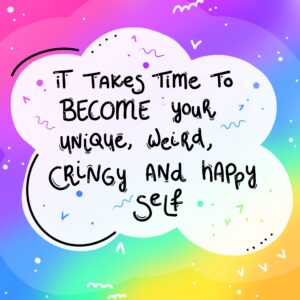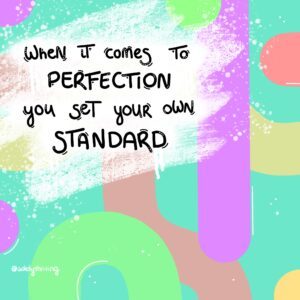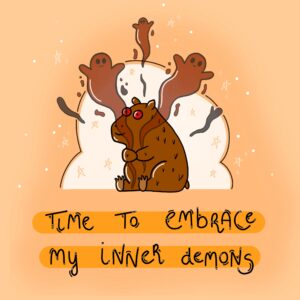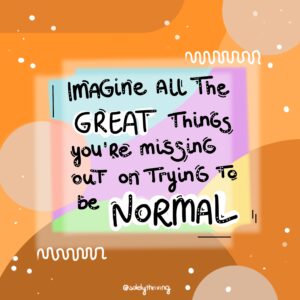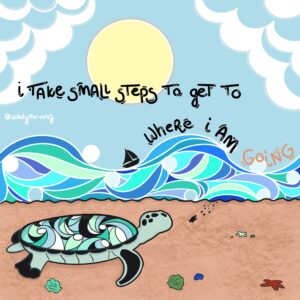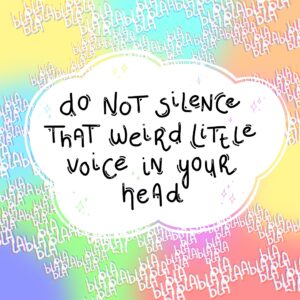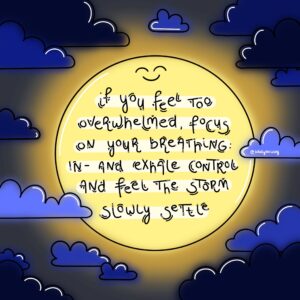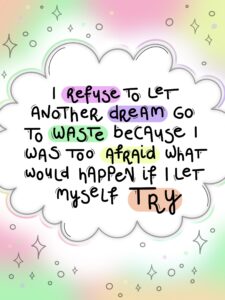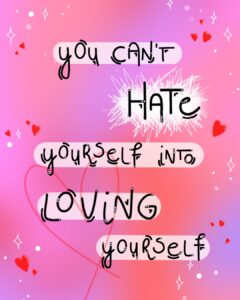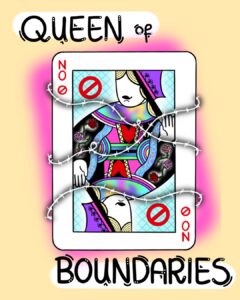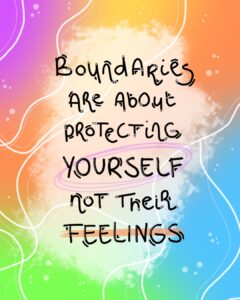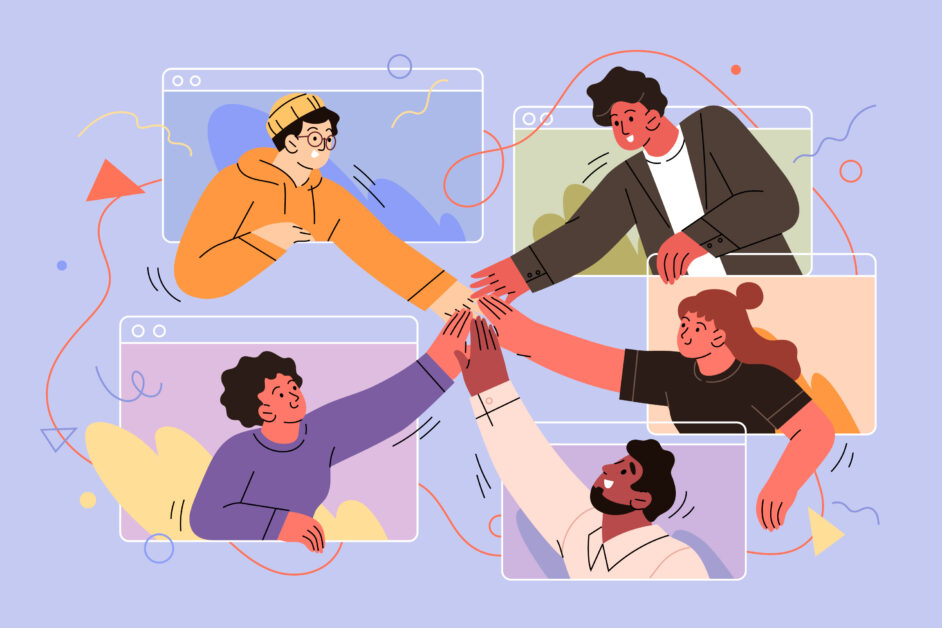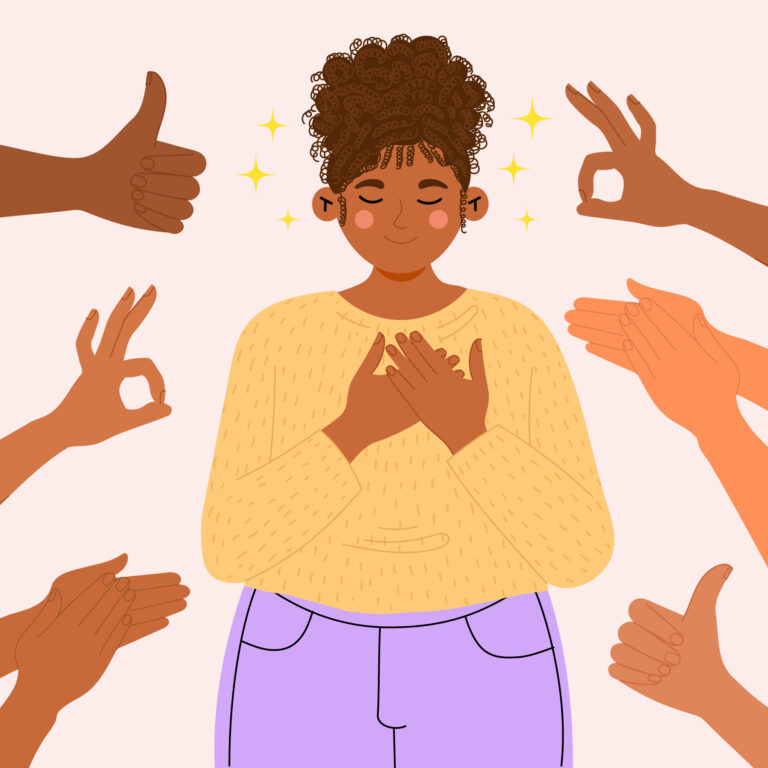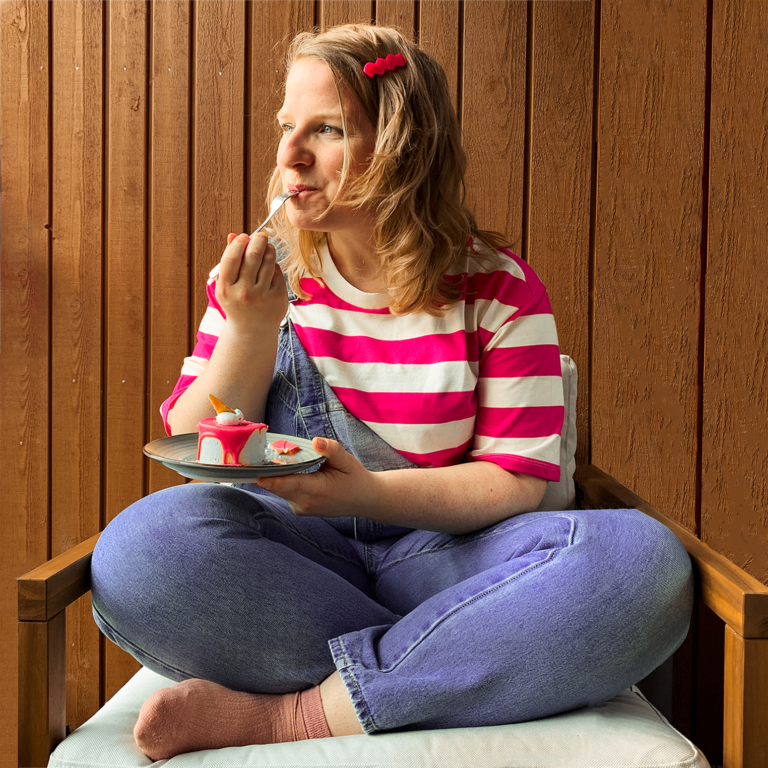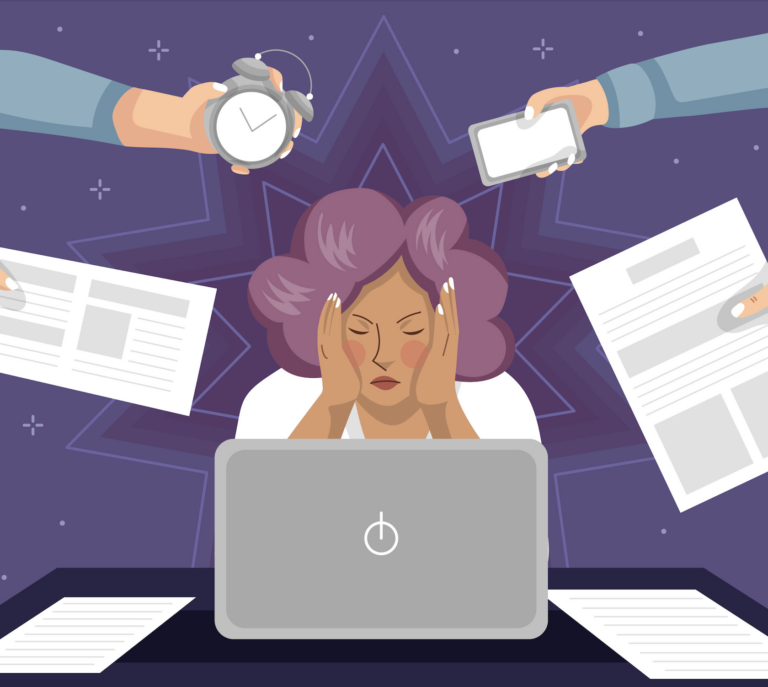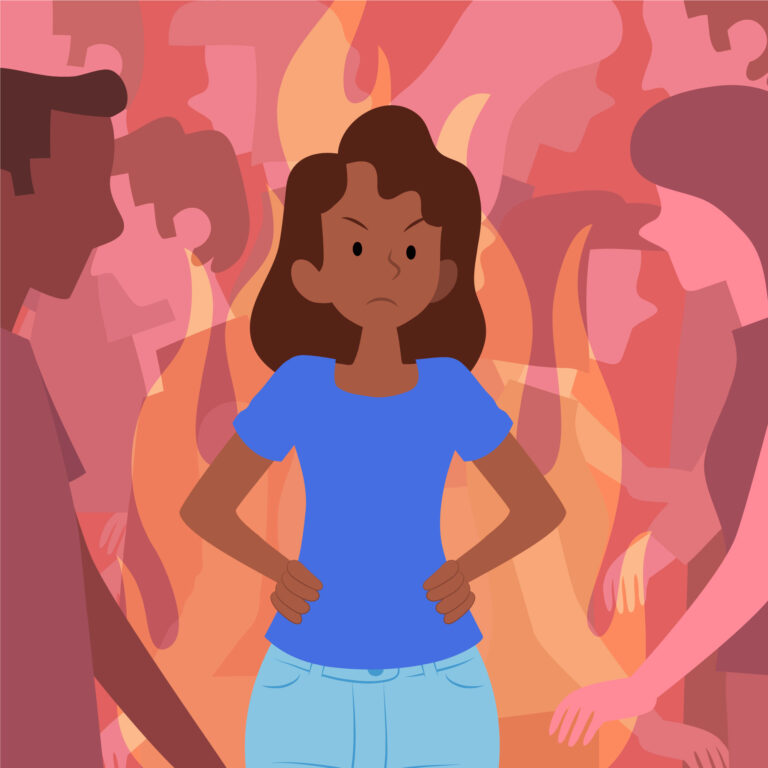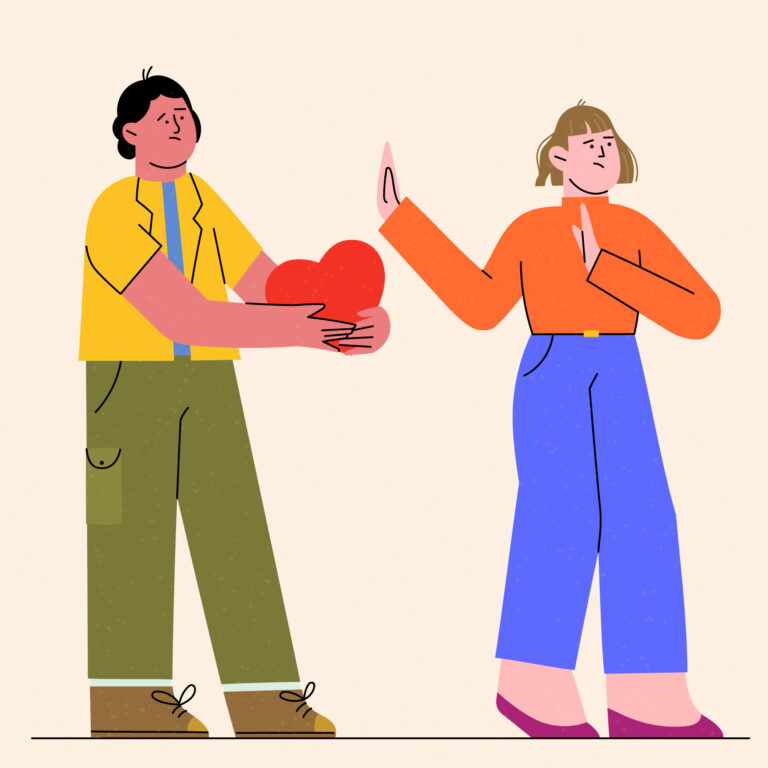Becoming happy: this is how you can easily seize your mood
Learn how to turn around a 'bad mood'-day
The key to becoming happy? Who wouldn’t want that? Is changing your mood actually possible? We have all heard people say to “just get over it” when you’re feeling low. But is it actually that easy? Well, no. Not really. And it’s definitely tempting to fall into the trap of “if I do XYZ, my life will suddenly be better”. That’s a lie. But there are some small (and big) things you can try to change your mood. And I’m going to share my go-to methods.
Everyone wants to become happy.
Some people really believe we can change our mood with clever little tricks. We’ve all heard the same old, same old: “if you smile, you’ll already feel better”, “don’t think about it too much” or even “just be happy”.
As if ‘happy’ is just a switch we can flip. Something that’ll just happen if we will it into existence.
Especially when you’re dealing with mental health issues like depression, it can be impossible to “just be happy”. Because the chemicals in your brain might’ve actually missed the memo.
And here you are, with a fake smile on your face, waiting for that internal frown to turn upside down.
Short summary for quick readers
- Happiness doesn't just appear out of thin air and you can't just 'become' happy when you're struggling with your mental health. There are small things you can do to turn a 'regular' bad day around.
- Emotions are conscious responses from your body towards a particular situation or person. Mood are responses to nothing in particular and that lasts longer. An emotion can turn into a mood.
- A bad mood is made up of negative emotions but that doesn't mean you are not happy at all. Your negative emotions just have the upper hand.
- When you're in a bad mood, you can try and focus on the very few positive emotions you do have and help them get the upper hand.
- You can do that through behavior: happiness is a journey, not a destination. The pillars of happiness are authenticity, meaning, optimism, gratitude, compassion and generosity.
- You can practice these on a daily basis: giving to charity, writing in a gratitude journal, going out for a walk while enjoying your surroundings; small habits can make you a little happier.
- Another small thing to focus on to feel more positive, are glimmers: small pieces of joy that you can actively seek out. Like a smell, a visual stimulus, a feeling, an activity, etc.
- If you make a list of the small things that make you happy (smell of coffee, a field of flowers, dancing, etc) then you can actively try and seek glimmers to make your dark day a little brighter.
Becoming happy doesn’t just happen
I will definitely not be one of those people that claims that people who struggle with actual mental health issues can change their mood just like that. I struggle with depression and anxiety myself. And that means I know that happiness doesn’t just appear out of thin air just because you want it to.
But as someone who also has spent a lot of time trying to find happiness while dealing with debilitating mental issues, I might have some insight that could turn a bad day (not a ‘full on depression’-day) around.
Because I do believe that when we’re feeling low, when it’s not our brain’s chemistry fighting us with all its might, there are ways to actually help yourself feel a little less low.
Maybe even get you feeling a little more positive about your life.
And that could significantly help with your mental health. So, let’s try and ‘just be happy’, shall we?
* Free wallpaper download * Free wallpaper download * Free wallpaper download
* Free wallpaper download * Free wallpaper download * Free wallpaper download
Let’s learn about ‘mood’
If you’ve been around for a while, you know I like to teach you stuff. So, we’re first going to dive into some interesting concepts that are related to the subject of this blog.
First, we’re going to see what ‘mood’ actually means.
Because how can you change something if you have no idea what it actually entails?
In psychology there are different terms to be aware of when discussing the subject of mood.
Emotions
Emotions are conscious responses towards something or someone, or a particular situation. When you’re experiencing a certain emotion, your body expresses it with certain small reactions. That add up to the feeling of the actual emotion.
Think of when you’re angry, for example. Your heart starts racing, your face gets hot; different emotions express themselves in different ways. Or different physical reactions are necessary in order to experience the emotion.
Other components of emotions are: the subjective experience, or stimulus. And the last component is the way you respond to the emotion. The expression of the emotion.
Even though scientists don’t fully agree on what causes emotions, they’re definitely linked to thoughts. Either emotions cause thoughts or they’re a product of our mental musings.
Moods
Then you have your moods, which are responses to nothing notable at all.
An emotion is very short-lived and intense while a mood might actually last for days without being very strong.
Although the two of them are different, they are linked to each other. An emotion can turn into a mood. And if you’re in a bad mood you’ll probably be experiencing some negative emotions like sadness or anger.
If you’re in a good mood, you might experience some emotions like happiness or joy.
Your mood can influence the way you see the world, your motivation, the decisions you make and your social life. Your mood might even be affecting your memory. And that’s why there can be much to gain from trying to change our emotions, and with that our mood.
What is a bad mood?
Now that we’ve established what a mood actually is, we need to talk about what it means to be in a ‘bad’ mood.
Because moods are either positive or negative.
They’re made up out of either positive or negative emotions.
A bad mood is an accumulation of negative emotions. If you’re in a bad mood, it just means that your negative emotions won. The scale was tipped and your feelings of happiness, peace and joy just weren’t enough to actually measure up to your feelings of sadness, anger and fear.
Being in a bad mood doesn’t mean you don’t have any positive emotions left. It just means they’re buried underneath all of the negativity. You still have the capacity to feel good. It’s just that your bad emotions are much louder and drown out everything good.
Even though it sounds like a little bit of a bummer, the good news about that realization is that if your positive emotions are still there, you might be able to multiply them and make sure they get the upper hand.
The key to all that? Your thoughts, behavior and even your physical activity.
Happiness seems to be a butterfly
The ultimate goal is to be happy, right?
To people who have been trying to ‘just be happy’ for as long as they can remember, happiness can feel like this fleeting thing. Something you try to catch but that keeps escaping from your grasping hands.
But happiness is a state of mind that consists of some components that can be achieved in a lifetime. Meaning you could actually learn how to be happy too (depression excluded, of course).
According to positive psychology, happiness is actually about the life you’re living. And whether or not that life is actually meaningful and satisfying. Researchers seem to agree that a lot of what makes us happy, are things we can – to a certain extent – control.
Your job, your relationships, the city you live in, the choices you make, what you do during the day and the way you respond to the things happening around you. All of those contribute to your happiness.
Or to your unhappiness.
But it’s also about the way you think and act. The beliefs you have and how you express those beliefs. Happiness seems to be fleeting but there are things you can do to make it feel less like a lottery. And more like an active choice.
The luxury of becoming happy
Now, let’s be real. There are plenty of reasons why you wouldn’t have control over the things mentioned above.
I’m a firm believer that money can buy happiness (as long as the amount of money accumulated is still about comfort and not about hoarding wealth). Because people living in poverty don’t have the money to just switch cities or countries.
Not everyone can change houses the moment they’re unhappy.
And not everyone can just quit a job that makes them miserable.
Or, as I mentioned before: sometimes it’s just not possible to ignore your bad mood and “just take a walk”. The danger of positive psychology is that you can’t just manifest your way out of a horrible situation. And it comes across as pretty insensitive to suggest otherwise.
But even if you’re living in a hopeless situation in which you feel like you’ll never be able to quit that job or to finally have financial security, you can do small things to help yourself feel a little better.
I’m not saying you’ll delude yourself into believing you’re fine, but to just have a little moment of peace in which you forget the rest of your troubles for a second.
To tackle the bad things happening with a heart that feels just a little lighter.
1. The pursuit of happiness: becoming happy through behavior
A lot of people believe that happiness is an end goal. That you have to do XYZ to become happy. And then you’ll just be happy forever. Until something horrible happens and you have to start from scratch.
But according to experts, that is not what happiness is about.
It’s not about having that one job or getting that promotion. It’s not about finally having X-amount of money in your bank account. Happiness is work. Because the feeling that we label as happiness, is about the fact that you’re working towards something that you find important.
Something that makes you feel like your actions are aligned with your beliefs and that you’re actually getting closer to the person you would like to be. Without actually giving up after you get there. It’s true that people always want bigger and better as soon as they have what they were aiming for.
But that’s not necessarily a bad thing.
Because wanting to learn something new as soon as you mastered one skill, doesn’t mean you’re not appreciating the thing you just learned. And thinking about what you want to achieve next after you just landed a dream job, doesn’t mean you will constantly feel restless.
Your happiness should be about appreciating where you are, accepting that this is what life looks like right now and thinking of ways to challenge yourself more. Believe it or not: you can chase happiness without constantly feeling like you’re lacking.
Pillars of happiness
Psychology Today describes a few of the pillars of happiness: having meaning, authenticity, optimism, gratitude, compassion, and generosity.
As you can see, none of these are actual “end goals”. And none of them include a certain job or a specific amount of money.
But all of these pillars can relate to money or your career or relationships.
Being authentic can be about the work you do on a daily basis. And how it fits your beliefs and what you stand for. When you align your job to match the things you find important, you might significantly increase your happiness. Because you get to go to work every day, knowing you get to work on something that brings you joy.
Generosity can be about giving back when you finally reached the goal of comfort with your finances and are heading towards the hoarding stage of wealth. That could even be your motivation for making more money in the first place.
Starting a side hustle just so you can donate all your profits to a charity of your choice? How joyful!
The same goes with relationships. Want to feel more connected to your partner or cultivate deeper friendships with the people around you? Think about what you find important and how that relates to the different pillars of happiness.
Working towards that goal and the results that come out of it, will definitely give you a feeling of happiness.
Goals and motivation
What seamlessly fits into these pillars of happiness, is the skill of goal setting that we talked about in this blog.
Because when you set goals for yourself you always think about the ‘why’ of it all.
And this seamlessly blends into this blog post about motivation. Where I talk about the reasons why you’re doing something and how a good intrinsic motivator can help you feel more committed. And – eventually – help you achieve the goals that will ultimately help you pursue happiness.
Happiness is about working towards something that makes you feel good. It’s literally about the journey and not the destination, no matter how cliché that might sound.
2. Small pieces of happy: becoming happy through thoughts and activity
Now, I know that all of the things mentioned above can feel like big, long-term changes. That might not instantly make you feel better. To that I say: don’t ever underestimate the power of making a choice that aligns with the pillars of happiness.
Finally quitting your job or signing up for a course, purchasing some new equipment for a hobby you want to try out… All of these things can make you instantly feel better, more motivated and more optimistic about the future.
You can quite literally change your mood by just sending one email or with one click of a button.
When you sign up to volunteer with an organization that aligns with your values, you can instantly feel better. Because of the prospect of possibly helping people without having lift a finger yet.
But I also know that there aren’t opportunities like that every day.
If you’d have to sign up for something every time you feel bad, you’ll be drowning in responsibilities that you won’t be able to stick to. Luckily, there are small pieces of ‘happy’ to be found.
Even when you’re not making an active change to your life.
Glimmers for becoming happy
If you haven’t heard about glimmers yet, then I’m glad I can introduce you to this wonderful concept.
That will immediately make your life a little more beautiful.
Glimmers are part of the mindfulness-umbrella. But they’re a more accessible way to practice mindfulness than, for example, meditation might be. Glimmers are exactly what the word suggests: small pieces of light shining through the darkness of your days.
And by actively looking for your glimmers, you can combine little pieces of light to tip the scale in the opposite direction. And maybe feel a little bit better than you did before.
Glimmers are small stimuli that you find around you that make you feel good. A glimmer can be anything. It can be the light coming into your bedroom through the curtains. Or your cat lying beside you on the couch.
A glimmer can be a sound or a smell, something visual or something to stimulate your other senses.
And that means that the possibilities are literally endless.
As I write this, I’m looking through the window. And I see a grey sky. Rain pouring down on the people trying to make their way through this depressing weather. But my glimmer is the sound of my keyboard and the little ticking noise of the rain against the window.
There are glimmers to be found everywhere.
Glimmers on a hard day
And if you know what your personal glimmers are, you can also actively look for them.
Do you enjoy a walk in the forest? Time to put on those walking shoes and head out.
Do you like the smell of fresh baked cookies? Try and make a batch. Or ask a friend or partner to do that for you.
And whenever you’re out and about trying to look for glimmers; take a picture or video of your favorite ones. It might not be the same as witnessing it live, but it might help when you’re glued to the couch and can’t find a reason to get up.
Glimmers open up your arsenal of ‘what to do when I feel low’. And make it very easy to feel a little bit better.
If you write down every glimmer you come across, you can built a list of things you can try when you’re feeling low. Like reading your favorite book, watching a scene from a show that made you feel light or singing a song that made you feel like dancing.
Becoming a little lighter. Just for a little bit
Glimmers are a unique and personal way to find a little bright in the darkness of your day.
That’s not to say that they’ll instantly make you feel better.
But when I feel the sun on my face on a gloomy day, a smile creeps into the corner of my mouth. And that small moment of happiness lights up the dark corners of my brain.
Even if it’s for a little bit.
And sometimes, a tiny moment of joy is all that’s needed to actually acknowledge how bad you were feeling. It might give you the little nudge necessary to let those feelings out.
The times I’ve cried after feeling a small speck of joy during a bad mood-day…
Crying has become one of my glimmers just because of the feeling of release it gives me.
Move your body towards becoming happy
A perfect way to combine your glimmers in a way that will bring you even more joy, is by making them into something you have to move your body for.
Like dancing, walking, exercising or simply getting off the couch and walking towards the window to breathe in some fresh air.
We all know that exercise can actually make us happier. But it can be hard to actually push ourselves to get moving when everything in our body is screaming at us to stay put.
Combined with glimmers, exercising might become a little bit more accessible.
Like how I love to go out for a run when it’s literally pouring. Whenever the rain starts to become really bad, I feel the urge to go outside and just run.
Or how I enjoy a walk in the morning when the sun is out and there are dew drops everywhere.
When you combine exercise with glimmers, it becomes a fun activity that brings you joy in multiple ways. Maybe you love watching a show while working out; go for it. Or maybe you only want to work out with a friend.
All of these little glimmers combined with the dopamine release from exercising might actually boost your mood a little bit. And get you out of a funk early.
Last words on becoming happy
I really want to stress the harsh reality that everything mentioned above is not a fix for everyone. Or even a possibility for every person reading this.
Don’t ever feel guilty or inadequate for not being able to implement these small methods into your life. All I ever want is to share my own experience to maybe possibly help someone else.
I never want people to think that what I write here is the be all and end all.
I talk about scientific research and about things that have been proven through actual trial and error. But that still doesn’t mean it’s a one size fits all.
And it still doesn’t mean that easy fixes like this can cure your depression. Or even the bad mood you’re personally experiencing. Becoming happy is, I think, one of the biggest struggles we as humans face. Especially in a world that actually isn’t set up for our happiness.
Living in a capitalistic hellscape where productivity is valued above all else, means that there barely is time to do anything but the things needed to pay our bills.
All the pillars of happiness mentioned above aren’t a priority in the world we live in.
The harsh reality
So, if you can’t manage to change anything in your life or if you can’t see any light in the constant darkness of your soul, then I send you love.
And I hope that there will be a time when you can find a small bright spot behind the black clouds of your life.
As long as you promise me to at least remember to look for them when you can. Because there is beauty all around us.
Glimmers are everywhere.
Whether they’re in nature, in the love from friends, the love we feel for our pets or in the food we eat.
And only when you let them in, will you be able to recognize them as such.




